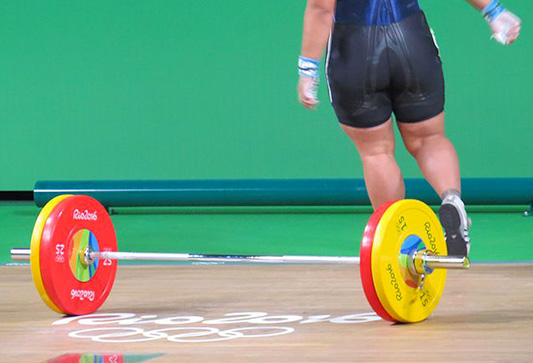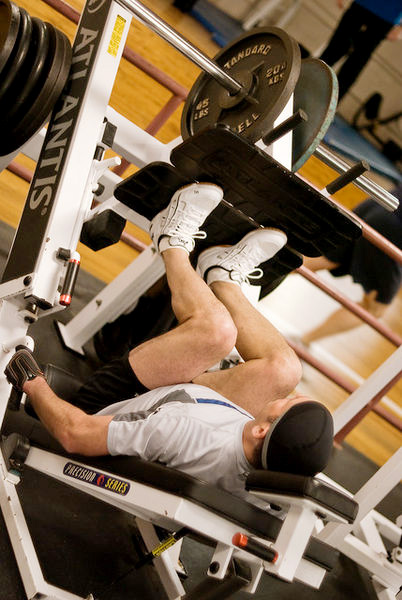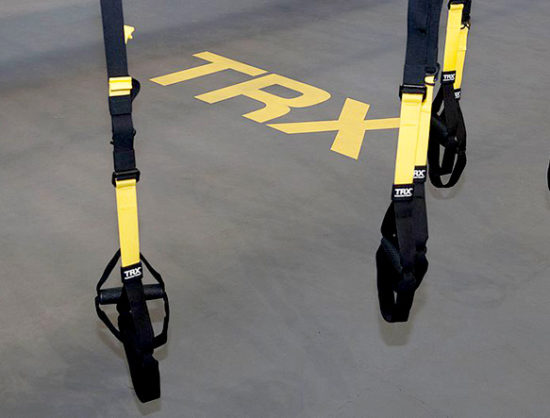Powerline: Getting strong on limited time

The most prevalent stressor that high school coaches relay to me regarding the organization and implementation of a year-round strength-training program is time constraints. High school student-athletes have a much broader scope of activities and interests than ever before, and many of them are multi-sport athletes.
The frenetic pace that’s in lockstep with all of these responsibilities places a great deal of strain on student-athletes’ lives. Unfortunately, the all-important component of strength training can fall victim to this time crunch.
Training within the school curriculum
With all that we know about the benefits of strength training as part of the total physical fitness package, it’s surprising that more high schools do not offer a class with a strength-training emphasis. A qualified instructor (through both academic discipline and certification) lending his or her expertise in a daily, regularly scheduled class setting provides immeasurable, positive outcomes for all members of the entire student body.For those who participate in interscholastic athletics, a strength-training class offers a learning environment, in addition to a training opportunity as part of the regular school day.
Many high school districts have removed physical education classes from their once-required curriculum status and now offer them either as electives — or not at all. As unfortunate as this situation is for a myriad reasons, especially with the soaring obesity and overweight rates among young people, it may open the door for expanded class offerings in the area of strength and fitness.
Many coaches already own degrees in the health and physical-education disciplines. With the addition of a recognized certification in the field, they make excellent candidates to teach these courses. I recommend the implementation of a prerequisite beginner to intermediate class for freshmen and sophomores, and an advanced class for juniors and seniors.
I have spoken with numerous coaches, administrators, athletes and parents who have a system like this in place in their high schools. They all speak to its values in physical development and time management.
Now, let’s take a look at a short list of specific protocols that can be administered in just about every situation you can face as a coach.
Press-pull upper-body rotations
A very time-efficient, strength-training protocol for the upper body is the press-pull rotation. It’s simplistic in design, yet very productive and intense in execution. This approach is especially effective as a post-practice lift.
You merely need to choose 10 to 12 total exercises, half pressing movements and half pulling movements, and then arrange them in an alternating order. Working with a training partner and performing one high-effort set (i.e. the final two to three reps are difficult but still achieved with good technique) of eight to 10 reps per movement, this workout can be completed in approximately 40 minutes. The time factor depends upon the dictated tempo of the between-set protocol.

One or two warm-up sets can be included in the early phase of the rotation, but you will find little need for them as you progress deeper into the routine.
We instruct our athletes when to step-up to the given exercise and start the set. The training partner is responsible for spotting, guidance and motivation throughout. Our staff provides additional in-set instructions, technique reminders and other vital coaching dictums.
Upon completion of the set, the coaches time the recovery and preparation for the next set (e.g. charting the results of the lift, loading the partners weight). Once the allotted time expires (e.g. one to two minutes), the second player is instructed to start his set. One truly hard, all-out set of each exercise fits the bill for production, as well as meeting the time-efficiency requirement.
Here is an example of the press-pull rotation:
- Barbell bench press: One set of 8-10 reps.
- Dumbbell bent-over row: One set of 8-10 reps.
- Dumbbell incline press: One set of 8-10 reps.
- Seated machine horizontal row: One set of 8-10 reps.
- Standing military press: One set of 8-10 reps.
- Lat pulldown: One set of 8-10 reps.
- Barbell close-grip bench press: One set of 8-10 reps.
- Seated machine high row: One set of 8-10 reps.
- Seated dumbbell shoulder press: One set of 8-10 reps.
- Standing high row/pull: One set of 8-10 reps.
- Barbell incline press: One set of 8-10 reps
- Seated machine low row: One set of 8-10 reps.
For coaches who want to perform more sets of one particular movement, another option is to choose four exercises (e.g. two presses and two pulls), and perform three sets of each for the 12-set total.
The presses and pulls can still be alternated through the rotation (i.e. rotate through the four chosen movements in a press-pull mode, one set at a time) or performed in a more traditional approach of executing all three sets of one movement before moving to the next exercise.
Lower-body pre-exhaust
A great protocol for heightening the work production of the lower body when time is an issue is to pre-exhaust the muscle compartments of the thighs, hamstrings and hips with isolation movements, then move to a multi-joint movement such as the leg press.
Here is one example of how we do this:
- Leg curl: One set of 8-10 reps.
- Leg extension: One set of 8-10 reps.
- Hip-back machine: One set of 8-10 reps.
- Leg press: One set of 8-10 reps.

A short rest of two to three minutes is taken and then the rotation is executed one to two more times, depending upon the time allotment. As simplistic as it might appear, this routine — when performed with the effort and intensity mentioned earlier — is very productive and efficient.
The multi-joint selection can be changed for a variety of purposes. We have inserted lunges, front squats, single-leg squats and hex-bar dead lifts in that slot with excellent results.
Here are a couple of suggestions for making this lower-body rotation even more challenging:
- Perform the movements in a unilateral fashion (i.e. one leg at a time).
- Accentuate the eccentric (lowering) phase of the movement by increasing the time under load (TUL). Try an eccentric TUL of four to six seconds initially, and then build the TUL gradually (every couple of weeks or so) to six to eight seconds. The difference in intensity will be duly noted by your athletes.
Body-weight rotations
Body-weight rotations are another time-efficient method. Simply put, these are an aggregate of tried and true exercises that primarily use one’s own body weight for the resistance.
The beauty of them is that very little (if any) equipment is needed, so the often-times tedious tasks of changing weights or other equipment settings are removed from the equation.
A short list of our favorites include TRX Straps, which provide a multitude of movements for just about every major muscle group in the body; parallel dips; and chin-ups.

Obviously, there are innumerable choices in the body-weight arena: lunges, squats, push-ups and various abdominal and core exercises come to mind. With a little thought on your part, a nice assortment of movements can be strung together for a great workout when the clock is unforgiving.
In our scheme, the total number of exercises included in these rotations has varied from as few as four to as many as 12. Total sets (or rotations through the full cycle) are dependent upon the volume you wish to incorporate in the given workout, as well as your allotted time. Normally, at least 10 total sets are accounted for in a body-weight schematic.
Final Rep
We use TUL protocols for many of these rotations, especially for the body-weight cycles, as they offer a consistent, more reliable assessment of the work being performed. A coach signals the start of the movement and tracks the TUL with a stopwatch. We have used 30 to 60 seconds for each movement in our TUL rotations, which is dependent upon the total time allotment and the number of exercises or sets we wish to perform.
Repetition cadences can still be applied (e.g. an accentuated eccentric phase of three to four seconds), and accountability remains constant, since the set is not completed until the coach with the watch says it is.
Most of these cycles are short-rest affairs, with each partner performing the exercises in a back-to-back manner, then moving quickly to the next movement. Doing this provides an additional metabolic factor (i.e. anaerobic stressor), which magnifies the overall training effect.
For increased resistance, we have applied manual resistance (i.e. a spotter adding appropriately administered, hands-on pressure to the lifter during the execution of the movement), or included weight vests (up to 15 to 20 pounds) for the athletes to wear while performing the exercises.
One thought on “Powerline: Getting strong on limited time”
Leave a Reply
You must be logged in to post a comment.



I’ve been teaching a class like this for the last 15 years. It’s an elective for Juniors and Seniors. Mostly athletes sign up for it. It involves 3 days of activity, with 2 days of classroom instruction. the classroom involves lecture/discussion, made up of training theory, nutrition, and sports psychology. It’s been a very popular class…..always filled. It’s been a pleasure to teach!